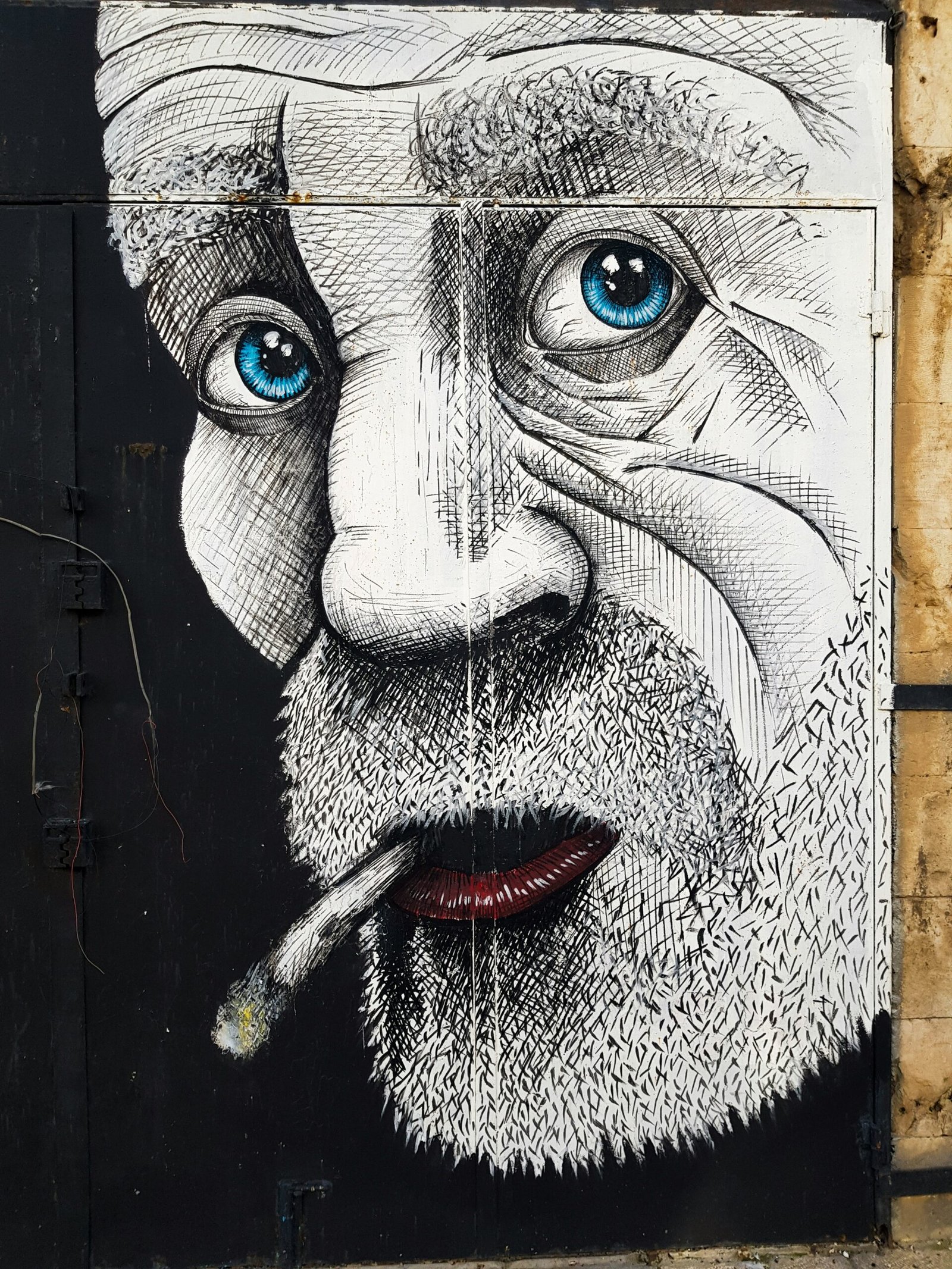Introduction
Mei is a young graphic designer hailing from China, navigating the complexities of her identity as she seeks to establish a unique design style. With a passion for creativity that has been nurtured since childhood, Mei has always been captivated by the rich tapestry of cultural elements surrounding her. However, despite her fervent desire to innovate, she encounters numerous challenges that hinder her ability to express her authentic self through her work.
Her background plays a significant role in shaping her perspective on design. Growing up in a diverse environment filled with traditional art forms, Mei has been profoundly influenced by the heritage of her ancestors. Yet, she finds herself torn between the expectations of a globalized design market and the deep-seated traditions of her culture. This internal tug-of-war creates a sense of uncertainty, as she grapples with questions of relevance and originality in her artistic endeavors.
In the pursuit of her design style, Mei is faced with the daunting task of balancing cultural authenticity with contemporary trends. The pressure to conform to current aesthetics often leads her to doubt her instincts, making her feel disconnected from her roots. Each project becomes a battleground where she must defend her vision while appeasing the demands of clients and the broader design community.
Further complicating her journey is the influx of digital influences that saturate the design landscape. As a result, Mei often feels overwhelmed by the plethora of styles and ideas available at her fingertips, yet none resonate deeply with her personal narrative. This struggle encapsulates the experiences of many young designers attempting to carve out their unique spaces within an industry that celebrates individuality while simultaneously pushing for conformity.
The Design Workshop Experience
Mei’s adventure into the world of design begins when she enrolls in a local design workshop, an experience that she anticipates with eager enthusiasm. The workshop is held at a vibrant community center, characterized by its inviting atmosphere and eclectic decor that stimulates creativity from the very first moment. The air buzzes with a blend of excitement and curiosity as designers of varying backgrounds come together, all aiming to explore and refine their distinct styles. Mei finds herself surrounded by individuals who share her passion, each bringing their unique perspectives and experiences to the collective table.
As the workshop commences, participants are guided by an experienced designer who introduces them to a variety of new techniques. From fabric manipulation to innovative pattern-making approaches, the sessions are designed to spark creativity and broaden the participants’ design toolkit. Mei is particularly captivated by a segment that encourages the exploration of traditional craft techniques. This resonates deeply with her desire to integrate elements of her cultural heritage into her design work. The hands-on nature of the workshop facilitates learning and experimentation, urging Mei to push the boundaries of her creativity.
Throughout the session, Mei engages with diverse creatives, forming connections that inspire her artistic vision. Conversations flow freely, as participants share their artistic journeys, challenges, and triumphs. This exchange of ideas fosters an environment rich in collaboration, creating a space for constructive feedback and mutual growth. As she interacts with her peers, Mei not only gains insights into different design methodologies but also cultivates a sense of belonging within this vibrant community. The design workshop experience becomes a crucial stepping stone in her journey, ultimately influencing her perspective and fueling her quest for a unique design style that reflects her identity.
Meeting Daniel: A Catalyst for Change
During an immersive design workshop, Mei had the opportunity to meet Daniel, an accomplished designer hailing from Australia. Their meeting proved to be a pivotal moment in her journey towards understanding and embracing her unique design style. Daniel’s impressive portfolio spoke volumes about his diverse influences and the way he seamlessly integrated cultural elements into his work, prompting Mei to reflect on her own heritage.
As Mei and Daniel engaged in conversations about their individual backgrounds, it became evident that Daniel was not only passionate about design but also deeply committed to the idea of cultural integration. He shared insights from various projects where he skillfully incorporated indigenous motifs and narratives, highlighting how these elements enriched his designs and made them more relatable to a broader audience. Mei found herself captivated by Daniel’s approach, which emphasized the importance of storytelling through design.
Encouraged by Daniel’s perspective, Mei began to contemplate her own rich cultural background and the design traditions that had shaped her upbringing. Daniel urged her to delve deeper into her heritage, highlighting that honoring one’s roots can be a profound source of inspiration. He explained how an authentic connection to culture could transform a designer’s work, enabling them to create pieces that resonate on a personal and emotional level. This dialog inspired Mei to explore her identity further, bridging the gap between her cultural roots and contemporary design.
Through this interaction, Daniel emerged as a catalyst for change in Mei’s creative journey. His encouragement allowed her to understand the significance of embracing her cultural background and exploring the unique design narratives that awaited her. This relationship marked the beginning of a transformative period in Mei’s life, as she embarked on the path toward discovering her distinct design style that reflected both her heritage and contemporary influences.
Understanding the Power of Cultural Heritage
Cultural heritage refers to the legacy of physical artifacts and intangible attributes of a group or society that are inherited from past generations. In the realm of design, cultural heritage serves as a vital source of inspiration that informs creativity and innovation. By acknowledging and embracing one’s cultural background, designers can cultivate a unique style that resonates not only with their personal narrative but also with a broader audience. The infusion of cultural elements can lead to artistic expressions that are rich in meaning and significance.
The significance of cultural heritage in design is particularly pronounced when considering the diverse influences that shape our creative processes. For designers like Mei, exploring one’s heritage can unveil a wealth of inspiration, uncovering aesthetic forms, patterns, and narratives that may have otherwise remained dormant. The integration of such elements can set a designer apart in a saturated marketplace, allowing their work to tell a story that reflects their individual experiences and cultural lineage. For instance, traditional motifs or color schemes from Mei’s background may spark innovative interpretations, blending her heritage with contemporary design trends.
Furthermore, cultural heritage not only enhances creativity but can also foster a sense of community and belonging. Engaging with one’s cultural roots allows designers to connect with others who share similar backgrounds, creating a supportive network that encourages artistic growth. This emphasis on community can also elevate the importance of cultural preservation, as designers become ambassadors for their heritage through their creations. As Mei reflects on her rich background, she recognizes that her journey is not solely about finding a unique design style but also about celebrating and honoring the cultural influences that have shaped her identity.
Mei’s Experimentation with Traditional Elements
Mei’s exploration of traditional Chinese design elements marked a pivotal moment in her creative journey. Initially, she grappled with the challenge of incorporating these historical motifs into a contemporary framework. The tension between staying true to her cultural heritage and adhering to modern design principles often left her feeling uncertain. However, it was through this struggle that she began to fine-tune her unique aesthetic.
To kickstart her experimentation, Mei focused on familiarizing herself with various traditional elements, such as intricate patterns, vibrant colors, and age-old symbolism. One technique she chose to utilize was the art of paper cutting, which she meticulously learned from local artisans. This process not only revived an important cultural craft but also allowed her to create exquisite ornamental designs that resonated with her vision. By integrating these traditional aspects into her work, Mei aimed to create a dialogue between the past and the present.
Another significant element in her creative process was the adaptation of calligraphy. Mei found that incorporating stylized characters into her design projects provided an authentic connection to her cultural roots. However, she was mindful of maintaining the essence of these characters while ensuring that her designs remained visually appealing to a modern audience. The challenge lay in striking the right balance between familiarity and innovation. Mei often sought feedback from peers and mentors to refine her approach, ensuring that her work was both culturally respectful and creatively bold.
In this journey of experimentation, Mei learned that embracing traditional Chinese elements does not necessarily equate to imitating the past. Instead, it involves thoughtfully reinterpreting these components to create something uniquely her own, paving the way for a richer design narrative that honors her heritage while engaging with the contemporary design landscape.
Creation of a Distinctive Portfolio
Mei’s journey toward establishing a distinctive design portfolio began with a deep introspection of her cultural heritage, intricately weaving together elements from her traditional background and contemporary influences. This synthesis not only set her apart in the competitive field of design but also presented unique opportunities for creative expression. The foundation of her portfolio was laid through a series of pivotal projects that highlighted her unique style, demonstrating an innovative blend of old and new design principles.
One of her prominent projects involved reimagining traditional motifs from her cultural background, incorporating them into modern architectural designs. This approach allowed Mei to showcase how historical influences can seamlessly integrate with current trends, creating a visually arresting and meaningful experience. Her portfolio featured detailed case studies, revealing the strategic thought processes behind each design and emphasizing the narrative built around cultural significance and modern functionality.
Feedback from peers played a crucial role in refining and elevating her work. Through presentations and collaborative critiques, Mei welcomed constructive insights that encouraged her to explore various perspectives. This interaction fostered a supportive network that not only validated her efforts but also stimulated her creativity. As she continued to engage in design expos and community events, Mei found opportunities to share her journey and gather diverse viewpoints, which further enriched her portfolio.
Gradually, her distinctive portfolio began to attract attention within the design community, resonating with both traditionalists and modernists alike. By consistently showcasing projects that celebrated her heritage while appealing to contemporary aesthetics, she positioned herself as a noteworthy designer. This convergence of styles not only solidified her identity but also set a precedent for others seeking to navigate the balance between cultural heritage and modern design innovation.
Gaining Recognition and Feedback
As Mei’s unique design style began to flourish, she experienced a series of opportunities that contributed to her professional growth. Her distinctive portfolio, which showcases her cultural heritage and innovative approach, caught the attention of various fashion enthusiasts and industry experts. This recognition opened doors for her to participate in numerous design shows and exhibitions. The excitement of presenting her work on such prominent platforms was both exhilarating and challenging, as it demanded greater creativity and the ability to articulate her vision effectively.
Among these showcases, a notable event was the annual Global Fashion Festival, where Mei had the chance to display her creations alongside established designers. The festival not only allowed her to gain exposure but also provided a valuable networking opportunity. Engaging with fellow designers, buyers, and potential clients allowed Mei to exchange ideas and receive insights into the industry trends. Moreover, the diverse audience at such events became a sounding board for her work. Their reactions and feedback played an instrumental role in refining her design philosophy while enhancing her community connections.
Mei also leveraged social media platforms to share her journey and creations. By strategically using Instagram and Pinterest, she showcased her designs to a broader audience. This digital presence not only amplified her reach but also facilitated real-time feedback from her followers. Constructive criticism and accolades from both audiences and peers contributed significantly to her growth. The ability to adapt and evolve based on this feedback became a hallmark of her design process, allowing her to align her work with her audience’s expectations while remaining authentic to her cultural roots.
Inspiring a New Generation of Designers
Mei’s journey in discovering her unique design style has sparked a transformative movement within her community, inspiring a new generation of designers to delve into their cultural heritage. By openly embracing her roots, Mei has become a role model for aspiring creatives who may have previously felt disconnected from their backgrounds or unsure of how to incorporate them into their work. Her success emphasizes the importance of personal identity in the creative process and opens doors for others to express their stories through design.
The impact of Mei’s journey is not limited to her own achievements; rather, it creates a ripple effect that encourages young designers to explore their individual narratives. As they witness her triumphs, these emerging talents feel empowered to experiment with their cultural influences, thus fostering a sense of pride and belonging within the field of design. This entrepreneurial spirit piques their interest in creating a visual language that speaks to their heritage, ultimately leading to innovative expressions that celebrate diversity.
Workshops, community events, and social media platforms increasingly feature discussions around the significance of cultural representation in design. Mei’s story serves as a catalyst for collaboration among designers who share various backgrounds, fostering a vibrant exchange of ideas and techniques. This interaction not only nurtures creativity but also strengthens community ties, emphasizing the shared value of cultural appreciation in the arts.
By recognizing and embracing their unique design styles influenced by their heritage, a new crop of talented designers is poised to enter the industry. Their willingness to blend tradition with contemporary practices will undoubtedly enrich the design landscape, resulting in a broader and more inclusive array of visual narratives. As this movement grows, the established norms of design are challenged, paving the way for a future where cultural roots serve as a cornerstone of artistic innovation.
Conclusion: The Importance of Cultural Embrace in Design
Mei’s journey to discover her unique design style exemplifies the profound impact that cultural heritage can have on the creative process. As she navigated her influences, it became evident that integrating one’s cultural background not only enriches the design but also fosters a sense of authenticity that resonates with audiences. By drawing upon her roots, Mei was able to create pieces that not only reflected personal identity but also celebrated the collective history of her community.
In the world of design, authenticity is invaluable. Aspiring designers can take inspiration from Mei’s approach, understanding that their cultural backgrounds provide a wellspring of ideas that can enhance their work. The creative exploration of traditions, customs, and history opens doors to innovative perspectives that might otherwise remain unexplored. This journey highlights the importance of embracing the past as a means to inform the present and shape the future of design.
Moreover, honoring one’s roots serves as an empowering tool. It allows designers to establish a meaningful connection with their work, instilling it with personal significance and emotional depth. By embracing their cultural narratives, designers can define a unique voice that sets them apart in an increasingly globalized industry. This not only elevates their designs but also contributes to a richer tapestry of creativity and diversity within the field.
Ultimately, Mei’s experience illustrates that the integration of cultural heritage into design is not just beneficial, but essential. It cultivates a landscape where authenticity thrives, creativity flourishes, and individuals feel empowered to express their identities. As aspiring designers embark on their creative journeys, they should remain mindful of the value of cultural embrace. By doing so, they can craft designs that are not only visually captivating but also deeply rooted in personal and collective significance. Engaging with one’s heritage can lead to extraordinary artistic expressions and a lasting impact on the design community.


















No Comments
Leave a comment Cancel